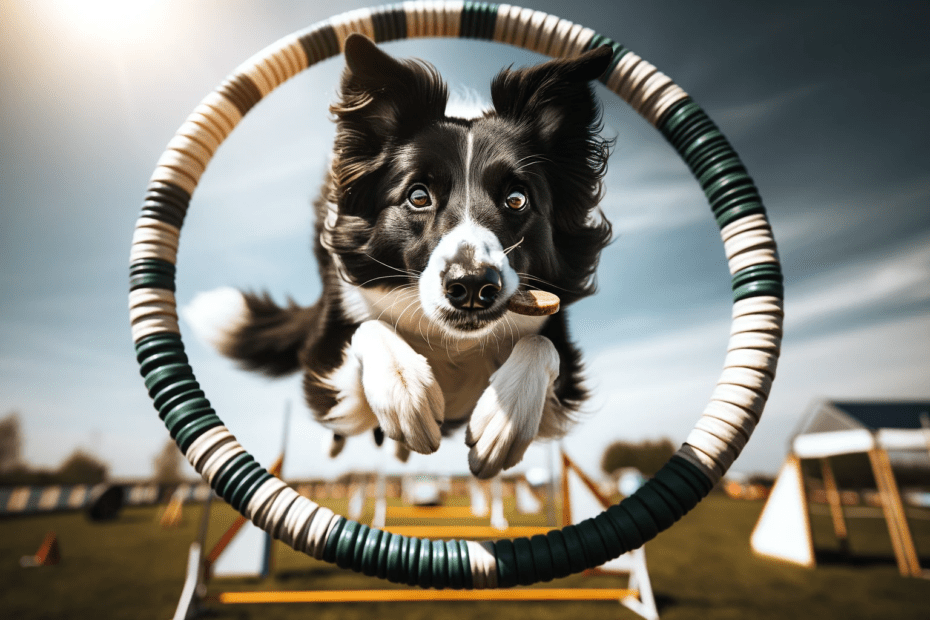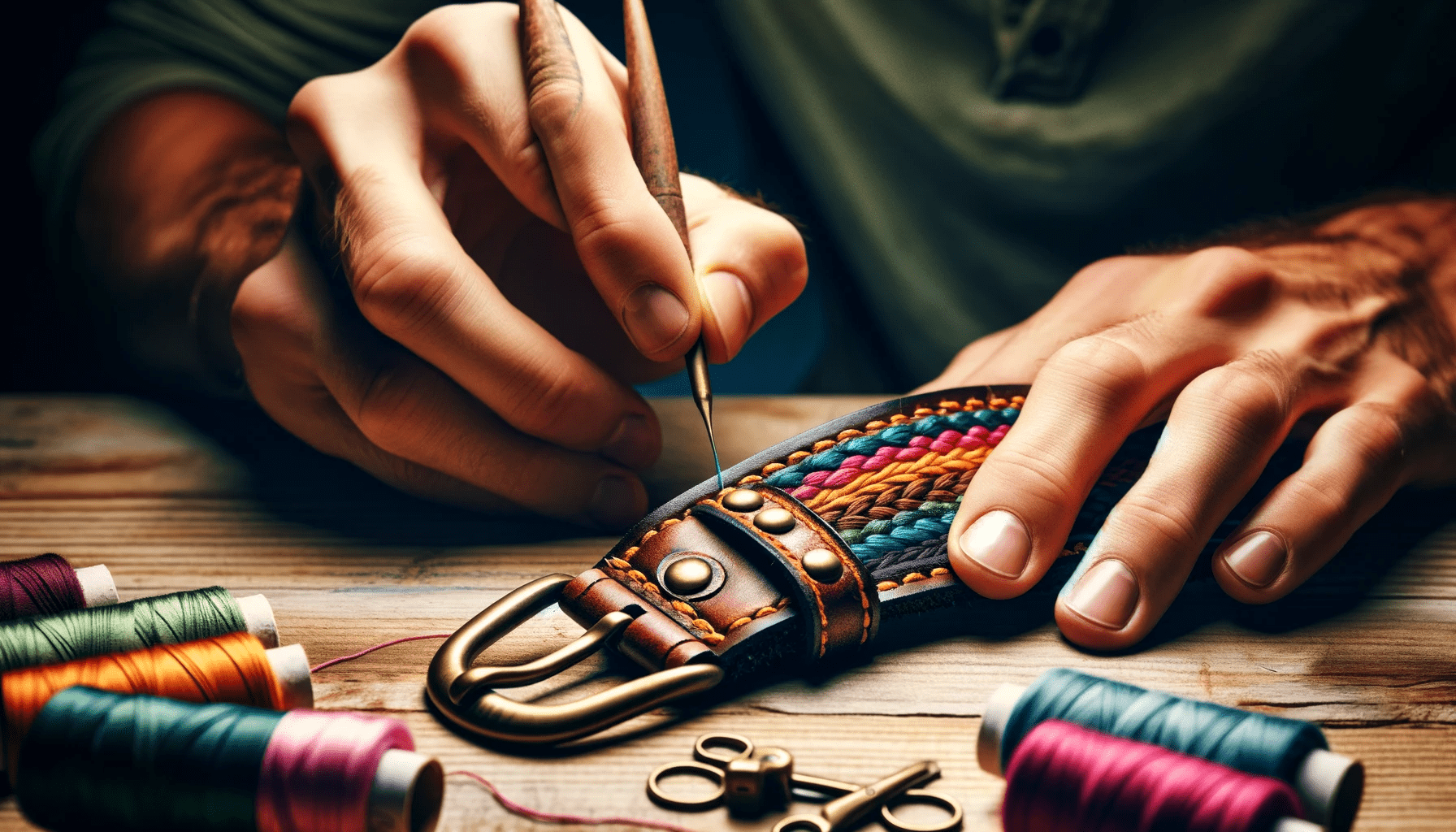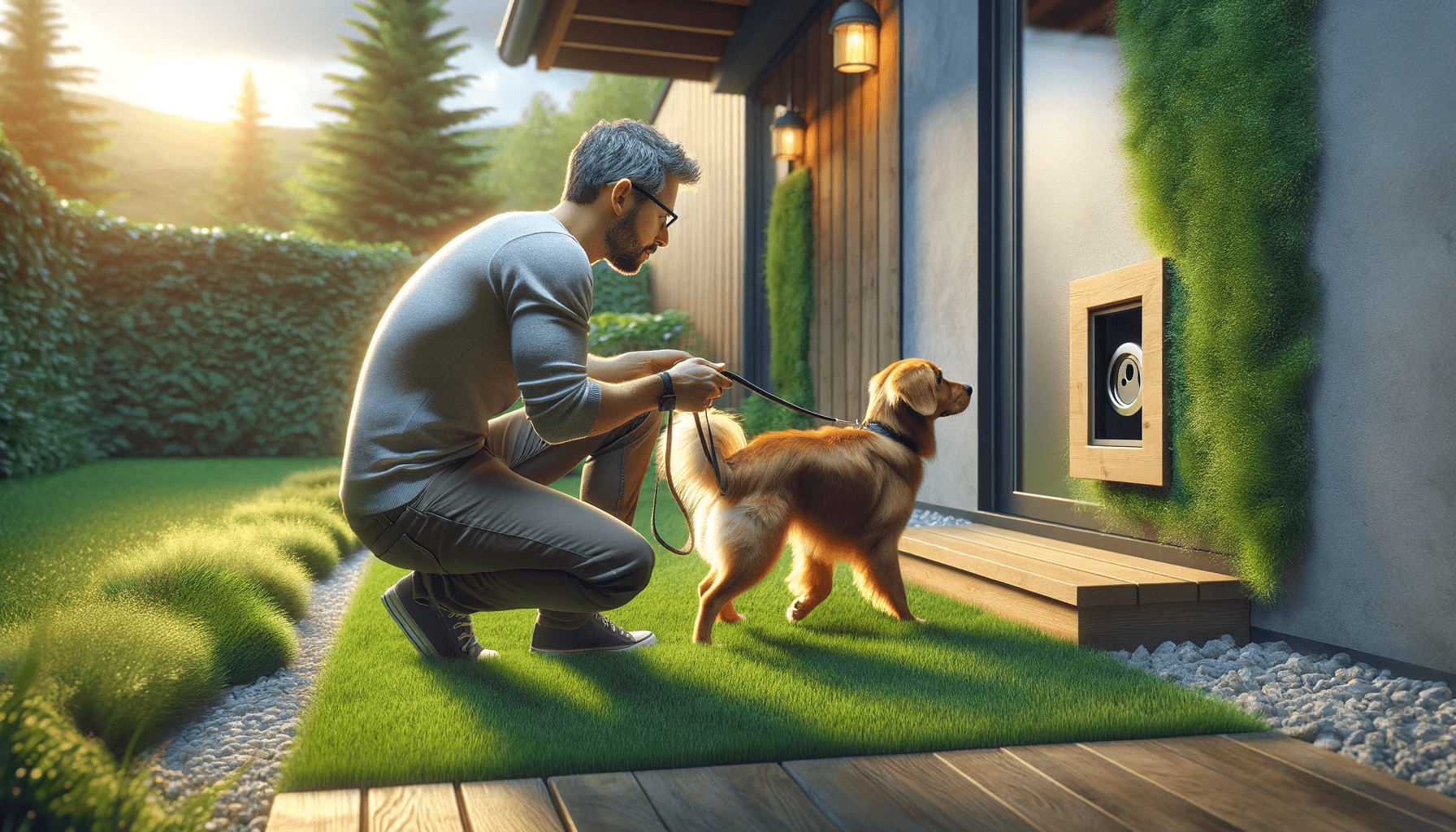Want to unlock the potential of your smart dog? Teach them tricks!
In this article, we'll show you how to:
- Assess your dog's intelligence
- Choose the right tricks
- Build a strong foundation for training
From basic obedience to advanced challenges, we'll guide you through incorporating props and toys into your training.
Get ready to unleash your dog's hidden talents and have fun along the way!
Key Takeaways
- Assess problem-solving abilities and adaptability to choose appropriate tricks for your dog.
- Tailor tricks to your dog's breed and tap into their natural instincts and abilities.
- Establish a regular training schedule and balance trick training with other activities.
- Start with basic obedience training and reinforce positive behaviors to build a strong foundation for unlocking your dog's potential.
Assessing Your Dog's Intelligence
Assess the intelligence of your dog by observing their problem-solving abilities and adaptability. Understanding your dog's cognitive abilities is key to unlocking their true potential. Dogs possess varying levels of intelligence, and by assessing their problem-solving skills, you can gain insight into their cognitive capabilities.
One way to assess your dog's problem-solving abilities is through interactive toys or puzzles. These toys require your dog to figure out how to retrieve treats or solve a task. Observe how quickly your dog can understand and execute the task at hand. A dog that quickly grasps the concept and finds creative solutions demonstrates higher problem-solving abilities.
Another aspect to consider is your dog's adaptability. Dogs that can easily adjust to new situations and learn new commands demonstrate a higher level of intelligence. Pay attention to how your dog responds to training sessions or new environments. A quick learner who can adapt to changes effortlessly exhibits a higher degree of cognitive abilities.
It's important to note that intelligence in dogs can vary based on breed and individual characteristics. While some breeds are known for their high intelligence, every dog is unique, and it's crucial to assess their cognitive abilities individually.
Choosing the Right Tricks for Your Dog
When it comes to choosing the right tricks for your dog, there are several factors to consider.
First, think about trick compatibility factors such as your dog's size, physical abilities, and temperament.
Additionally, tailoring tricks to your dog's breed can be beneficial as certain tricks may align with their natural instincts and abilities.
Finally, consider the training time required for each trick and whether it fits into your schedule.
Trick Compatibility Factors
Choose tricks for your dog based on their compatibility factors to unlock their full potential. Understanding your dog's motivations and considering trick difficulty levels are crucial in selecting the right tricks.
Here are three key factors to keep in mind:
- Breed and Size: Different tricks are better suited for certain breeds and sizes. For example, smaller dogs may struggle with tricks that require strength or height, while larger breeds may find more complex maneuvers easier to master.
- Energy Level: Consider your dog's energy level when choosing tricks. High-energy dogs may enjoy tricks that involve agility or fast-paced movements, while calmer dogs may prefer tricks that require focus and concentration.
- Personality and Temperament: Each dog has its own unique personality and temperament. Some dogs are more motivated by treats, while others may respond better to praise and attention. Choose tricks that align with your dog's personality and motivations for better engagement and success.
Tailoring Tricks to Breed
To maximize your smart dog's potential, tailor tricks to their breed by considering their unique characteristics and abilities.
Customized tricks that are specific to your dog's breed can be a great way to engage their natural instincts and talents.
For example, if you have a herding breed like a Border Collie or Australian Shepherd, you can teach them tricks that involve rounding up objects or even people.
On the other hand, if you have a retriever breed like a Labrador or Golden Retriever, you can focus on tricks that involve fetching and retrieving items.
Understanding your dog's breed and what they were originally bred for can help you choose tricks that tap into their natural abilities, making the training process more enjoyable for both of you.
Training Time Considerations
If you want to make the most of your training sessions, it's important to consider the amount of time you have available to teach your dog new tricks. Here are three things to keep in mind when it comes to training time considerations:
- Optimal training frequency: Dogs thrive on consistency and repetition. It's important to establish a regular training schedule to help your dog learn and retain tricks more effectively. Aim for short, frequent sessions rather than long, sporadic ones. This will keep your dog engaged and prevent them from getting overwhelmed.
- Balancing trick training with other activities: While trick training is important, it shouldn't be the only thing you do with your dog. Make sure to balance training sessions with other activities like walks, playtime, and socialization. This will ensure a well-rounded and happy dog.
- Setting realistic goals: Be mindful of your dog's abilities and limitations. Choose tricks that are appropriate for their age, breed, and physical capabilities. Setting realistic goals will make the training process more enjoyable for both you and your dog.
Starting With Basic Obedience Training
Before you can teach your dog impressive tricks, it's essential to start with basic obedience training.
Consistent training is key to instilling good behaviors and preventing unwanted ones.
Importance of Consistent Training
Consistency in training forms the foundation for unlocking the potential of your smart dog's tricks. By staying consistent, you create a clear and predictable environment for your dog to learn and understand what's expected of them.
Here are three reasons why consistent training is crucial:
- Builds Trust: Consistent training helps establish trust between you and your dog. When they know what to expect from you, they feel secure and are more likely to follow your commands.
- Reinforces Learning: Consistency reinforces the lessons learned during training. Repetition helps dogs grasp concepts and solidify their understanding of commands, making it easier for them to perform tricks.
- Enhances Communication: Consistent training allows you to effectively communicate with your dog. It helps you establish a common language, making it easier for you to convey your expectations and for your dog to comprehend and respond accordingly.
Reinforcing Positive Behaviors
To reinforce positive behaviors and maximize the potential of your smart dog's tricks, start with basic obedience training. Using rewards-based training methods is an effective way to shape your dog's behaviors.
Positive reinforcement involves rewarding your dog for exhibiting the desired behavior, such as sitting or staying. This can be done by offering treats, praise, or playtime as a reward. By consistently rewarding your dog for performing the correct actions, they'll associate those behaviors with positive outcomes and be more likely to repeat them.
Remember to be patient and consistent during training sessions, as it may take time for your dog to understand what's expected of them. With a rewards-based approach and shaping behaviors through positive reinforcement, you can lay a solid foundation for your smart dog's training journey.
Building a Strong Foundation
Start by establishing a solid foundation for your smart dog's training journey through basic obedience training. This is an essential step that will set the stage for teaching more complex tricks later on. Here are three key strategies to help you build a strong foundation:
- Using positive reinforcement: Reward your dog with treats, praise, or playtime when they exhibit the desired behavior. Positive reinforcement not only motivates your dog but also strengthens the bond between you.
- Setting realistic goals: Break down the training process into small, achievable steps. By setting realistic goals, you can ensure that your dog remains engaged and motivated throughout the training sessions.
- Consistency is key: Establish consistent rules and routines to maintain clarity in your dog's training. Consistency helps them understand what's expected of them and allows for faster progress.
Building a Strong Foundation for Trick Training
To establish a solid basis for successful trick training, it's crucial to consistently reinforce the fundamental behaviors from the very beginning. Introducing clicker training is an effective way to communicate with your dog and mark the desired behavior. This technique involves using a clicker, a small handheld device that makes a distinct clicking sound, to indicate to your dog when they've performed the desired action. By pairing the click with a reward, such as a treat or praise, your dog will learn to associate the sound with positive reinforcement.
Incorporating tricks into everyday life is another key aspect of building a strong foundation for trick training. Rather than setting aside specific training sessions, try to integrate training into your daily routine. For example, you can ask your dog to sit before giving them their food or to shake hands before going on a walk. By incorporating tricks into everyday activities, you'll help your dog understand that these behaviors are expected in various situations.
Consistency and repetition are vital when building a strong foundation for trick training. Make sure to practice the desired behaviors regularly and reinforce them consistently. With time, patience, and positive reinforcement, your dog will develop a solid foundation for trick training and unlock their true potential.
Advanced Tricks for Challenging Smart Dogs
Challenge your smart dog to new heights by teaching them advanced tricks that will showcase their intelligence and abilities. Whether your dog has special needs or is a hyperactive ball of energy, trick training can provide numerous benefits.
Here are three advanced tricks that won't only entertain and impress, but also help to further engage and stimulate your clever canine companion:
- Puzzle-solving tricks: For smart dogs with special needs, teaching them tricks that involve problem-solving can be highly beneficial. This could include teaching your dog to retrieve specific items by name, solve simple puzzles, or even play hide-and-seek. These tricks not only challenge their intellect but also provide mental stimulation and help build their confidence.
- Agility tricks: Hyperactive smart dogs often have an abundance of energy that needs to be channeled effectively. Agility tricks, such as weaving through cones, jumping over hurdles, and navigating through tunnels, can't only provide physical exercise but also help them focus their energy and improve their coordination and balance.
- Complex obedience tricks: Take your dog's obedience training to the next level by teaching them advanced obedience tricks. This could include tricks like walking on their hind legs, spinning in circles, or even fetching specific objects based on verbal cues. These tricks require a high level of focus and discipline, challenging your smart dog to think and respond quickly.
Incorporating Props and Toys Into Trick Training
To further engage and stimulate your clever canine companion, you can incorporate props and toys into their trick training. Using treats as motivation and clicker training techniques, you can enhance your dog's learning experience and make it more enjoyable for both of you.
Props and toys can add an extra layer of excitement to your dog's training sessions. For example, you can use a hula hoop to teach your dog to jump through or a tunnel for them to crawl through. These props not only provide physical stimulation but also help your dog build confidence and problem-solving skills.
When incorporating props and toys into trick training, it's important to use treats as motivation. Reward your dog with a treat every time they successfully complete a trick using the prop or toy. This positive reinforcement will reinforce their behavior and encourage them to continue learning and performing tricks.
In addition to treats, clicker training techniques can be used to further enhance your dog's training with props and toys. The clicker, a small handheld device that makes a distinct sound, can be used to mark the exact moment your dog performs the desired behavior. This helps your dog understand which action is being rewarded and speeds up the learning process.
Remember to always make training sessions fun and rewarding for your dog. Incorporating props and toys into trick training can provide mental and physical stimulation, making training sessions more enjoyable and beneficial for your clever canine companion.
Troubleshooting Common Training Difficulties
If you're experiencing difficulties in training your smart dog, try addressing common obstacles head-on. Troubleshooting common training difficulties can help you and your furry friend overcome challenges and achieve success. Here are three tips to help you navigate through common training issues:
- Troubleshooting leash pulling:
Leash pulling can be frustrating for both you and your dog. Start by teaching your dog loose leash walking in a controlled environment with minimal distractions. Use positive reinforcement techniques, such as treats or praise, to reward your dog for walking calmly beside you. Gradually increase the level of distractions as your dog becomes more comfortable walking on a loose leash. Consistency and patience are key to addressing leash pulling.
- Addressing fear-based behaviors:
If your dog displays fear-based behaviors, such as cowering, trembling, or aggression, it's important to address these issues with care. Start by identifying the trigger that causes fear and gradually expose your dog to it in a controlled and positive way. Use counter-conditioning techniques, such as pairing the trigger with something your dog loves, like treats or playtime. Seek professional help if your dog's fear-based behaviors persist or worsen.
- Seek professional guidance:
If you're struggling to troubleshoot common training difficulties, consider seeking the help of a professional dog trainer or behaviorist. They can provide personalized guidance, identify underlying issues, and create a customized training plan for you and your dog. Remember, every dog is unique, and professional guidance can make a significant difference in overcoming training challenges.
Frequently Asked Questions
How Long Does It Take to Assess a Dog's Intelligence?
Assessing a dog's intelligence varies depending on factors like breed and individual characteristics. It's important to consider the dog's ability to learn new tricks and the speed at which they grasp them.
Are There Any Tricks That Are Not Suitable for All Dog Breeds?
Not all tricks are suitable for all dog breeds. Some tricks have limitations and may be more suitable for certain breeds. It's important to consider your dog's breed and abilities when teaching them new tricks.
Can I Start Teaching My Dog Tricks Without Basic Obedience Training?
You can start teaching your dog tricks without basic obedience training, but it may have some pros and cons. While it can be fun and engaging, it's important to remember that obedience training provides a foundation for successful trick training.
What Are Some Common Mistakes to Avoid When Building a Strong Foundation for Trick Training?
When building a strong foundation for trick training, avoid rushing the process. Take your time and be consistent with your training. Don't neglect positive reinforcement, as it is essential for your dog's learning and motivation.
Are There Any Safety Precautions to Consider When Incorporating Props and Toys Into Trick Training?
When incorporating props and toys into trick training, it's important to gradually introduce them and supervise your dog. Choose appropriate props and toys based on your dog's breed to ensure their safety and enjoyment.
Conclusion
In conclusion, unlocking the potential of smart dogs with tricks is an exciting and rewarding journey. By assessing your dog's intelligence, choosing the right tricks, and starting with basic obedience training, you can build a strong foundation for trick training.
As you progress to advanced tricks and incorporate props and toys, you'll challenge and stimulate your dog's mind. Don't be discouraged by common training difficulties; with patience and consistency, you can unlock your dog's full potential and have a blast in the process.
Happy training!






